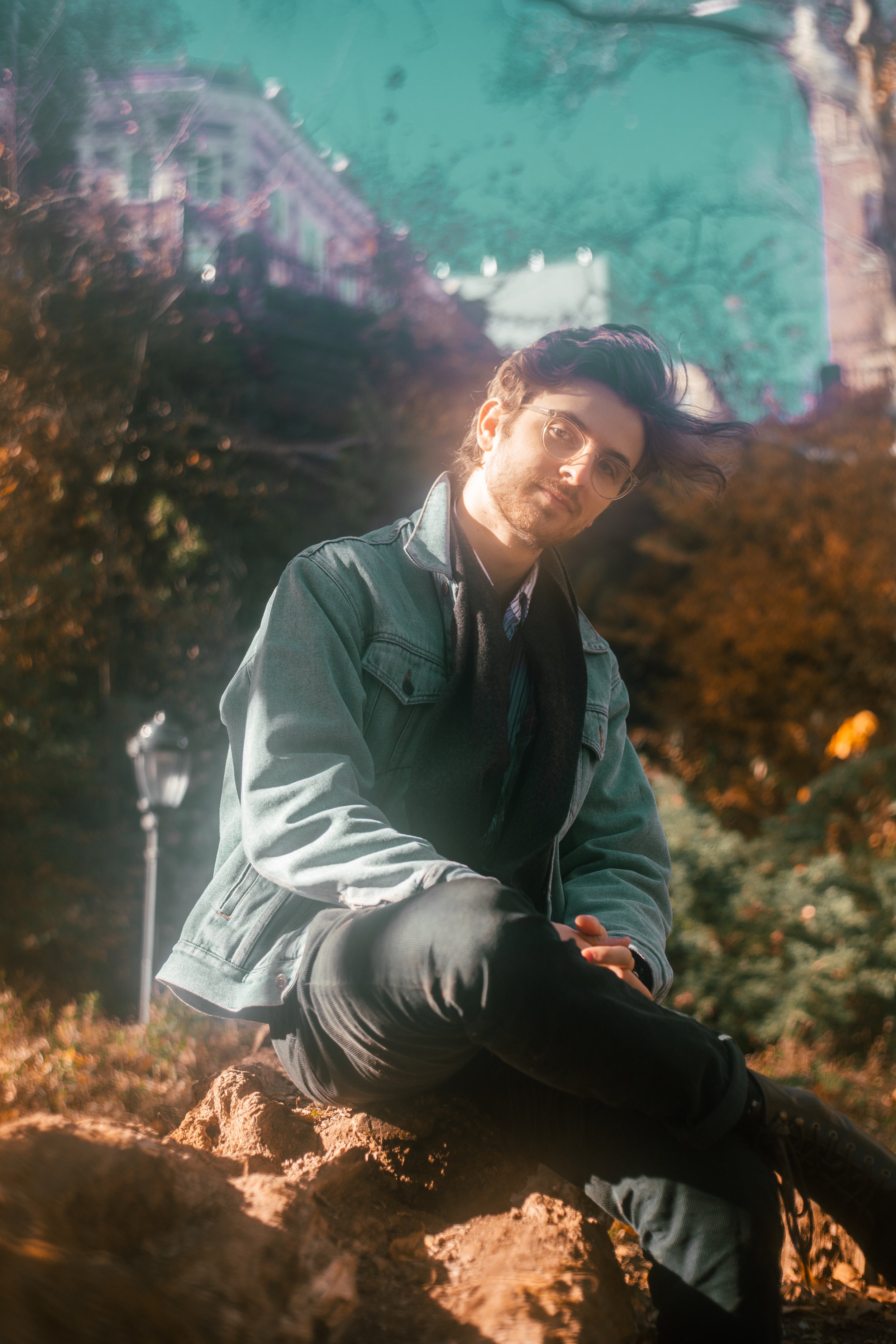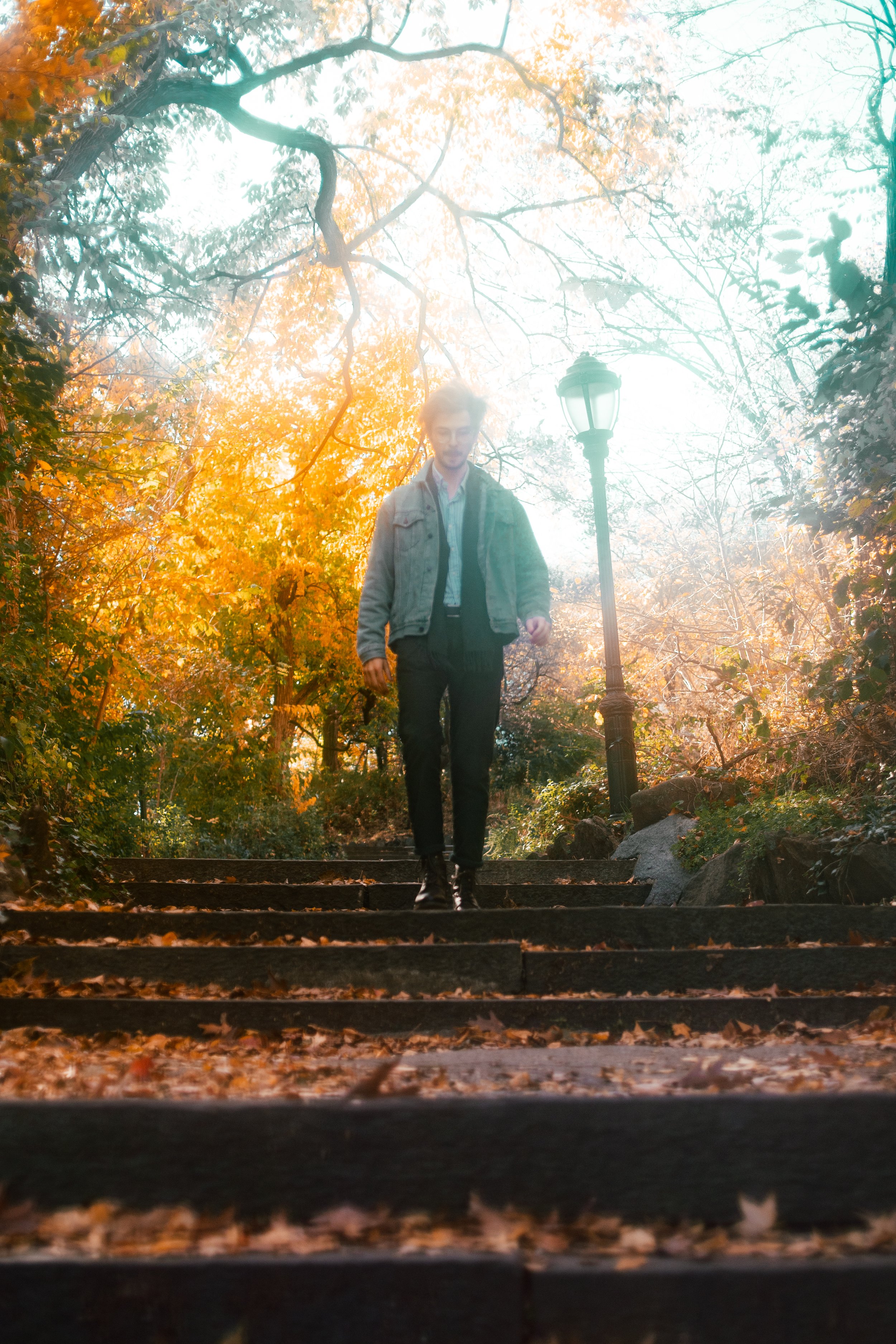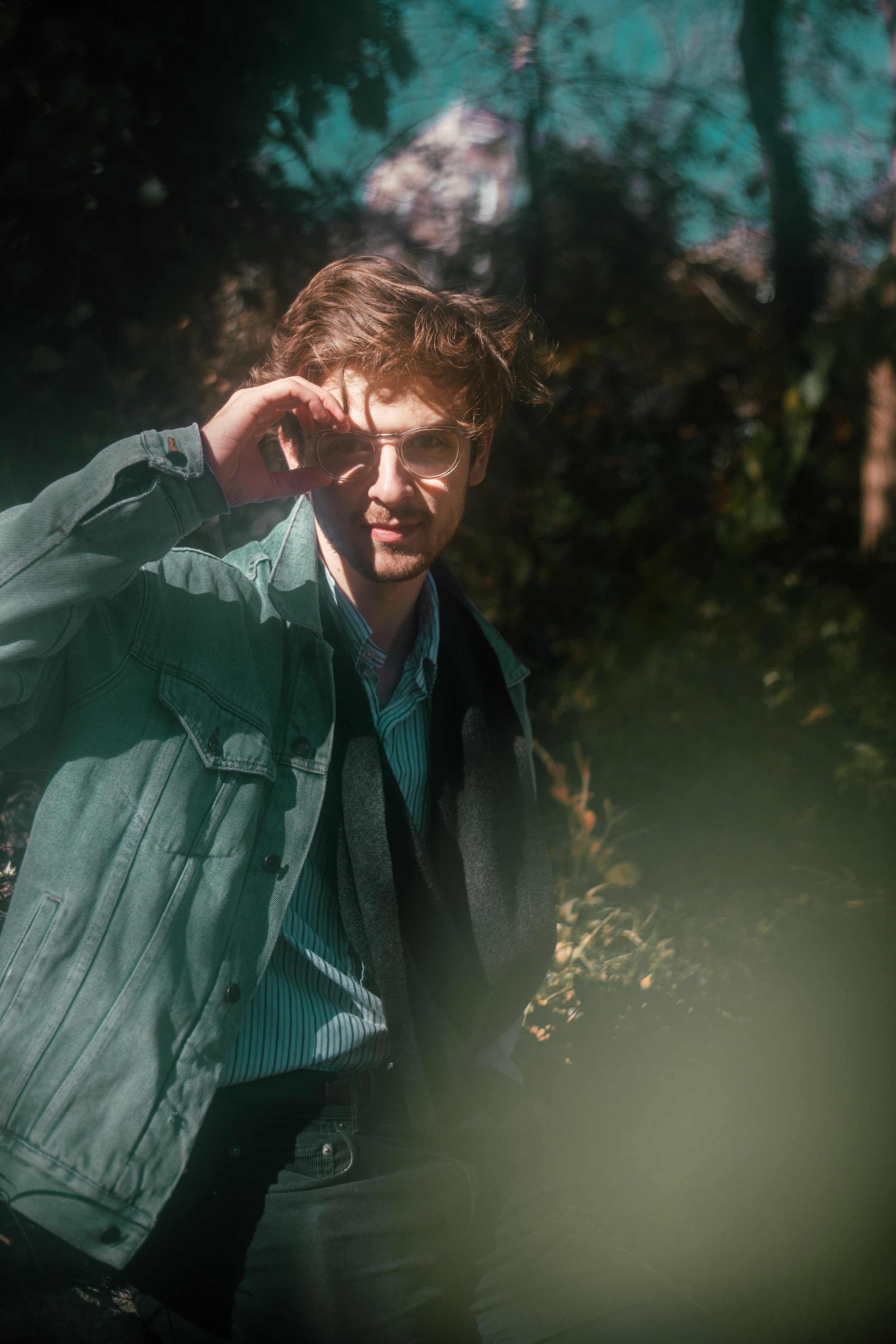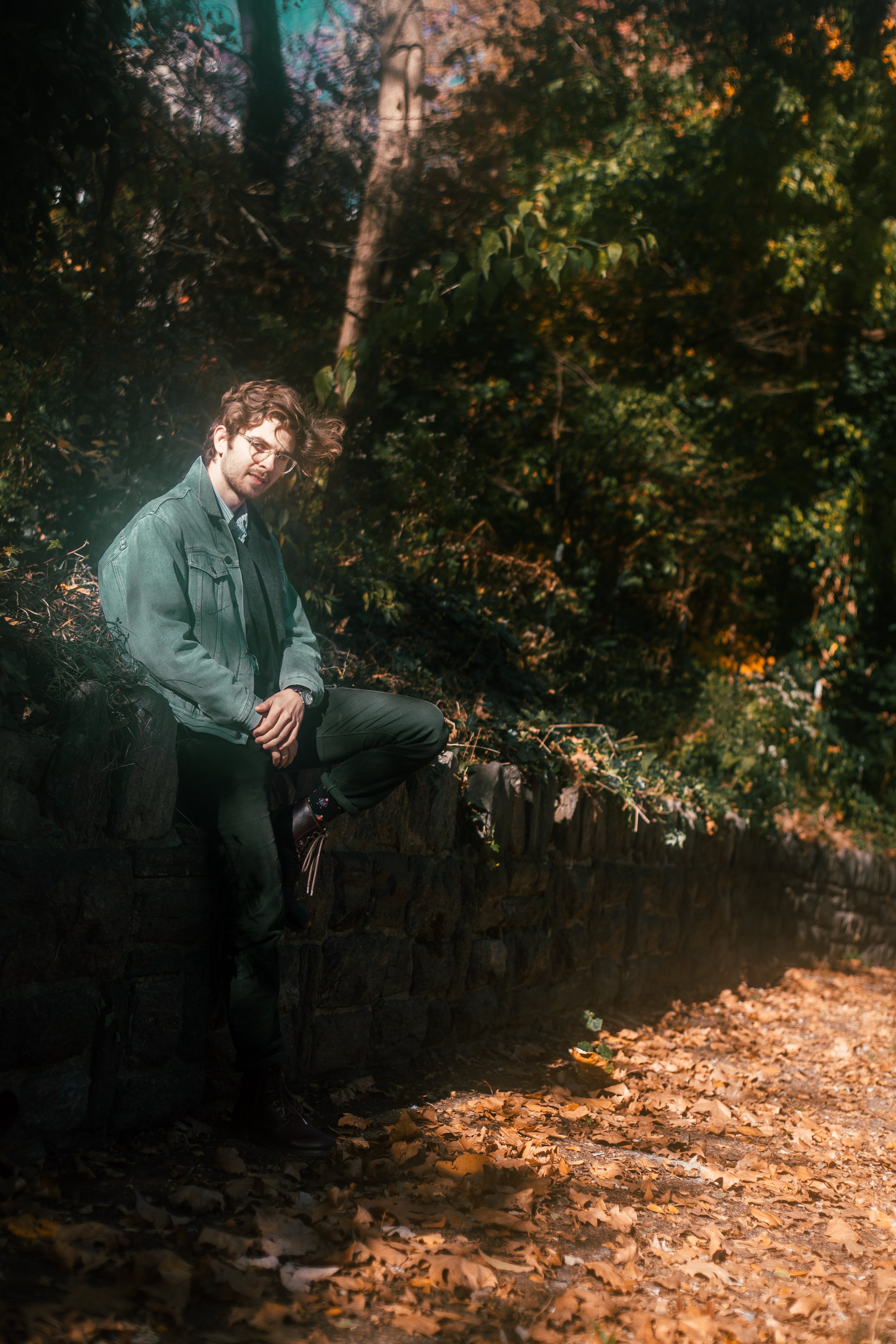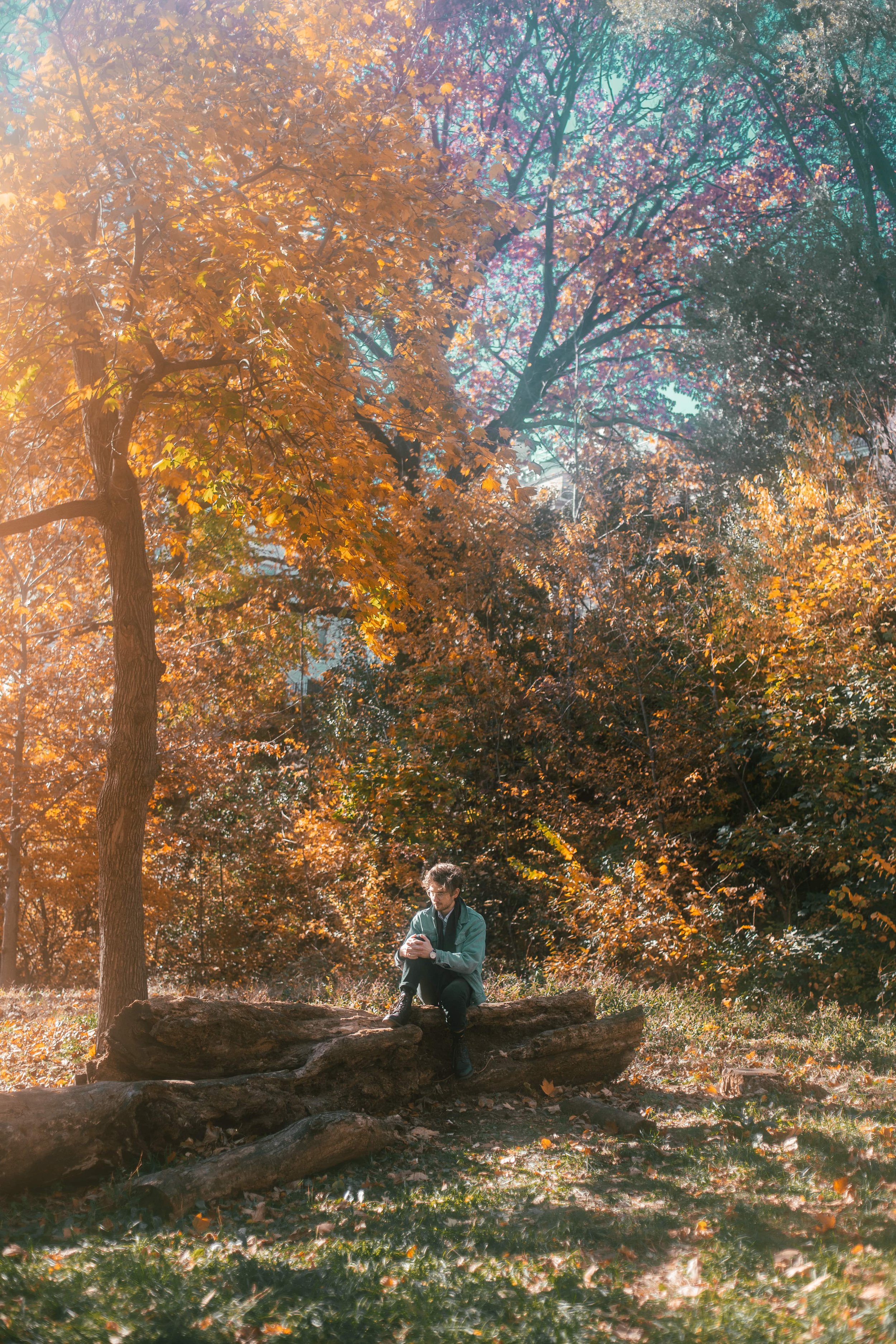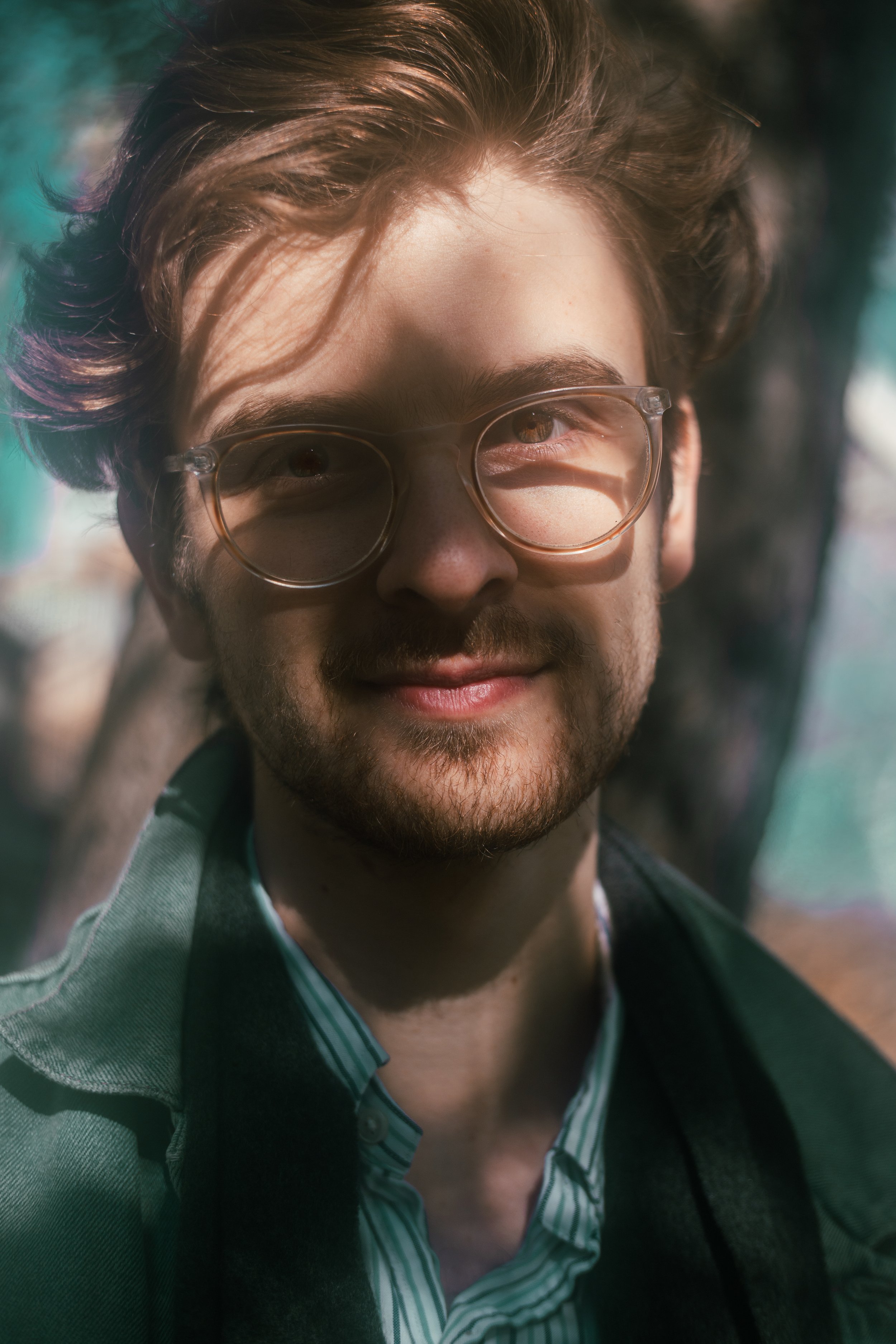Feature by Raunak Lally
Photos by Rommel Nunez
Go ahead and introduce yourself!
Ginger and Elsa Rose
I'm Zach, I'm a painter. I study History at Columbia. My main schtick is that I paint and that's what I'm hoping to make my life's project. I like to paint people in my life, I like to paint my friends and my family and people who I run into in the streets. I try to capture their interiority and anxieties and what gives them pleasure and excitement.
Where are you from? You said you paint people who you run into in the streets – is that in New York or back home?
I'm from New York, so this is home.
Are you involved in any student organizations or clubs on campus?
I'm the Graphics editor for The Federalist, which is a satire newspaper. I'm also on the debate team.
Shifting gears a little bit onto your work now, how did you start exploring oil painting as a medium to translate what you notice about subjects into an image?
I've been painting before I could talk, or so my mom says, so it's always been a way that I've expressed myself and been able to interpret the world. When I feel really stressed or anxious, I turn to drawing to ground myself in the world, so it's very therapeutic. For me, it almost makes the world make more sense when you're able to internalize the aesthetics of it and then reproduce it onto the page. That's always been a part of me. I started oil painting in high school––I was painting with acrylics before that. In high school, I started taking classes at The Art Students League on 57th Street, which is a really great school that has a lot of seniors taking classes there, and a few young artists. It used to be a really big and vibrant institution for the arts – Jackson Pollock went there, Norman Rockwell when there, Mark Rothko, people like that. I basically moved into oil because the colors are so much more vibrant, and to up my painting tenacity. I thought it would be necessary to move into oils.
Lukas’ Room
What motivates you to work across mediums? To sketch rather than paint or paint rather than sketch?
I'm sketching all the time; if I'm in the moment and I see something and I have my sketchbook, then I'll go for it. Painting is more of a thought-through process. Ideas for my paintings surface through a percolation process through the thoughts of my mind and I always have a bunch of those circulating at any given moment. I'll make a few sketches of them to see what they look like, see if they actually could be viable paintings, and if I think it's worth putting onto a canvas, I'll start painting.
My sketches are things that I see throughout the day and draw from life directly. My paintings are mostly from photographs, memory, or sketches.
The main difference between sketching and painting is that when I'm sketching, I'm responding to the world as it is directly in front of me, so if I see something and then I feel movement in an arm or a leg or whatever, or a color that stands out, and then I transfer it onto the paper. With painting, I am looking at the canvas and I am responding to the canvas, so it's a very different engagement with the artwork. When one thing changes, that suddenly changes the whole composition and I have to consider if I need more weight elsewhere on the canvas. I tend not to plan or draw out my paintings precisely before I paint.
In your oil paintings, you use color tones to capture the emotions, like the cool, chill tones of “Moving Day” or the warmer tones in “Women chatting.” How do you go about choosing what color palettes to use when setting these scenes? How do you immerse the viewer in this world that you're trying to create?
They go hand in hand, color and subject. When the idea of a subject comes, so do the colors. It's not like I want to paint a picture of moving out of the dorms during COVID and then I think "Oh, cool colors would be nice for that." I have this image in my head with cool colors already involved. It's a very intuitive process; I try not to make too many overtly rational decisions.
Moving Day
The greatest thing about painting is the fact that it gives you a direct view into the artist’s experience with the world and you can see how they feel merely from the way they apply the paint to the canvas. If an artist tries to plan that out too much, they add a filter to that, so I try to let it come naturally, especially when it comes to the colors since they’re the most immediately emotional part of the painting. It’s important for the color palette to arise naturally.
Normally, it starts with a few colors. For instance, I'm working on a painting right now of my roommate smoking a bowl on the fire escape and I was really drawn to the glow of the lighter on her face and the way that it made her face look whitish-yellow. In contrast, the bowl itself with the burning embers were a very piercing yellow-orange, and that combination was really great. The blue in the background created a really great contrast as well. I started with those three colors and from there, it was like, "okay, I have a blue, I have an orange, I have a yellow, I have a white. What comes next?" It builds from there into what the painting requires.
I was really intrigued by the way you omit faces in your paintings, whether it is used in the isolated figure in the back of "Women Chatting" or like the slightly obscured eyes in "Anya in the Cabin." Why do you decide to either paint a face with detailed features or make other features indistinguishable?
When it comes to the person who is in the foreground in the painting, I try to paint their face gesturally, the way figure sketches are often done. In art school, you'll have a model stand up doing a crazy pose, and then you have 30 seconds to sketch it down, so you sketch the gestures and the motion of the figure. I try to do a similar thing when it comes to faces’ gestures, capturing the way the nose juts out, or the lips cut back in, or the eyes and the curls of hair around them. It all comes together in a whirlpool of a face.
Women Chatting
For the figures that are less visible, I prefer paintings when there's contrast in detail between one figure and another. I think it draws attention to the one you're supposed to be looking at in the foreground and then the other one adds another level of mystery, creating a good level of balance. If you made it too detailed, then it wouldn't work as well on either of them, so that's a compositional decision. The idea is that there's someone watching the scene.
I've noticed this strange feeling in my paintings when you're looking in on this intimate scene. You can acknowledge a sort of voyeurism with another figure watching, someone who's a little bit less clearly delineated. Perhaps the viewer can connect to them more because they can put themselves in that face since it's not visible.
Talking about intimacy in your paintings, the perspective draws a lot of attention to that intimacy and brings life to the characters like in the slightly stretched, whimsical look of the room in "My bronx roommate" or the distance that you see between the subjects in "Wyatt and Alex." How do you use perspective in your works?
A lot of it comes from the fact that my paintings are set in rooms––in bedrooms, in living rooms. They're rarely set outside. It wouldn't be enough to simply paint a room with perfect perspective, because the relationship between the characters is sort of flat, so you can enforce a certain relationship between characters by having the room move around them and create either disorienting or a warm and inviting feel through the perspective. It's more interesting when you can feel like there's something about to happen, when you know that there's a sense of potential and movement that could come out of it.
I try to communicate that with the room as well. The room is gestural in the same way that the face is gestural; in this moment, in this room, what's the overall twist or motion? Questions like that reinforce the relationship between the characters.
Julian and Abhi
What drew you to painting people in the first place and making those the subjects, as opposed to, say, still life?
I like to paint things that matter to me, and, again, the way that I come up with ideas for paintings is just what percolates throughout life. The images that stand out most to me are images of people in my life. To communicate how I experience my world and how they experience the world, it makes the most sense to focus on them.
I want to paint my life and people happen to be more prominent in my life. There's definitely an argument to be made that objects are prominent in people's life and might have a certain significance. I would like to get more into that––that's definitely something I'm thinking about going forward. There are objects in my paintings and I sometimes try to communicate a relationship between the person and the object; if you just paint the object alone or the person alone, sometimes that's not as clear.
Another reason why I paint people is that it's not just about me, it's also about them, and so I try to paint the way that they experience the world and what's whirling within them. I want to capture their narrative, especially of those people I know well.
When you're creating these intricate worlds, do you ever see yourself in these worlds or insert anything that relates specifically to you rather than other people?
I've put myself into a few works recently. There's one work of my friend and me that’s called "Bushwick Room.” Sometimes that happens, but I haven't really painted many other self-portraits. There is a bit of myself in all of my paintings, in the subjectivity of it. It would be disingenuous to say that when I paint someone that it's just them, that the anxieties on their face are their objective, real anxieties. If you were to go and ask that person what they felt and how they're experiencing the world, it would probably be different. My paintings are my own, subjective view of how others exist.
Anya and Abie in Brooklyn
Sometimes I can portray something about a person that strikes upon something they didn't even know was existent. Someone will look at the painting and go "Oh wow, I didn't realize I was so sad!" But they’ll confess that they did feel that way, maybe without realizing. That's just to say there's a bit of truth––I mean, I hope there's a lot of truth––to the way that I express how these people feel. That being said, it’s inescapable that some of myself are going to get into that as well.
Taking a step away from the paintings over to your photography work, it's really unique and fun to look at these eclectic settings that you've captured, like "Montana Shop" or "Montana Hat Shop.” What's your process of setting up a shot?
My photographs are impulsive; they’re rarely set up. Similar to how I paint, I really don't like there to be too much rational process. Rationality and analytics can come later. Once it's been done, you can assess, but in the process, it’s more about feeling right, and when it does, boom, take the picture. It's really just in the moment, a sort of intuitive, creative decision. I travel a lot and I always have my camera, always on the lookout for good scenes. Again, I find that I'm still focusing mostly on my friends, people who I know.
Wyatt and Alex
Are there any overarching or intersecting themes you notice running between your photography, sketches, and paintings?
One thing that I'm working on right now is the experience of being right before adulthood and not knowing what you want to do and what's gonna come next. What's involved in that is anxiety, fear, worry, excitement, passion, confusion. That's what's most present for me in my own life. It's inescapable, but that's what I need to think about.
Due to the pandemic, have you faced any challenges or the way you interact with your subjects?
The pandemic hasn't made art more challenging for me, it's just made the context different. It's changed the sorts of aesthetics I have at my disposal. For example, it's made it easier for me to get into close contact with my subjects because I've spent the whole pandemic living with my friends. A lot of the paintings I submitted were done during the pandemic and all of them are of my roommates or someone who has lived with me at some point. I'm able to see them throughout their day, doing mundane things.
It's given me more material to work with in many ways. A lot of the time, we're all distracted by our own lives, running throughout the day, from class to class, to work, etc. The worry about the pandemic, the fear, and the claustrophobia of being stuck at home, it’s all present in my work.
Obviously, this idea of coming-of-age is not unique; a lot of artists have made work about it in the past. Something that's new now is the pandemic. There’s also our interaction with technology, which adds even more depth to all of these anxieties and all of these worries we experience as young people.
I'm so glad that I got to sit down with you and talk more about your work and your creative process, and I'm excited to see what's coming next! Is there anything you're currently working on?
I'm continuing to paint and photograph. I'm working on a painting right now with my roommate along similar lines. No big projects in particular other than my general ambition to get my artwork out there.
Where else can we find your work and stay in touch?
My Instagram is @zachary.ginsberg and my website is zacharyginsberg.com.































